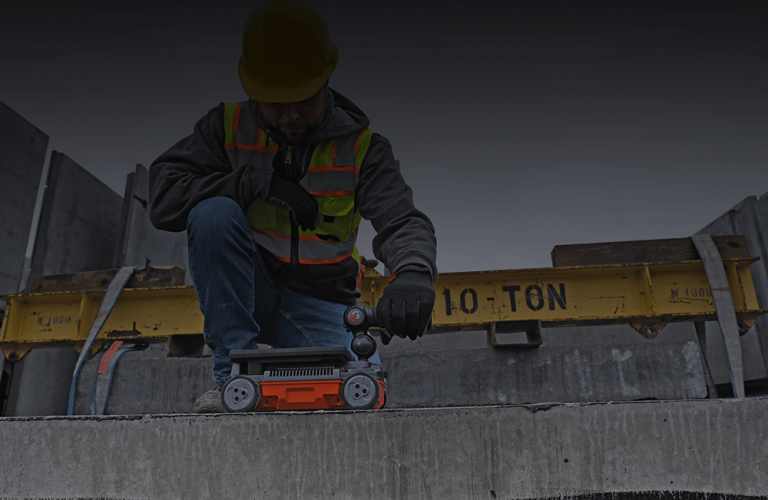Enhancing Task Preparation and Implementation Through Advanced Concrete Scanning Techniques
In the realm of task planning and foresight, execution and precision are important components that can make the difference between success and setbacks. Advanced concrete scanning methods have emerged as a sophisticated device set to elevate the criteria of task administration within the building and construction industry.
Advantages of Advanced Concrete Scanning Techniques

Improved Precision in Task Analyses
Enhancing task analyses via innovative concrete scanning strategies considerably increases the precision and reliability of construction assessments. By employing advanced scanning technologies such as ground-penetrating radar (GPR) and 3D imaging, project teams can now obtain detailed understandings right into the problem of concrete structures, recognizing possible problems or weaknesses that may not be visible to the naked eye. This boosted degree of precision in job evaluations allows building professionals to make even more educated choices pertaining to repair work and upkeep methods, resulting in improved overall task results.
Furthermore, the increased precision in job assessments accomplished via sophisticated concrete scanning techniques aids in reducing the risk of unanticipated issues during the construction stage. By proactively identifying concealed anomalies within concrete frameworks, such as rebar corrosion or voids, task teams can address these problems early on, preventing costly hold-ups and revamp later in the task lifecycle. Ultimately, the enhanced accuracy in job analyses promoted by sophisticated concrete scanning methods adds to better effectiveness, cost-effectiveness, and quality in building and construction projects.
Very Early Recognition of Structural Difficulties
Very early detection of structural difficulties plays an important duty in guaranteeing the integrity and safety and security of concrete frameworks throughout the construction procedure. Recognizing potential problems at an onset enables prompt intervention, stopping pricey rework, schedule delays, and security dangers. Advanced concrete scanning techniques, such as ground-penetrating radar Check Out Your URL (GPR) and 3D imaging, make it possible for task teams to uncover covert flaws, gaps, support design discrepancies, and other anomalies that could compromise the structure's stability.
By carrying out these techniques during the planning and execution phases, building experts can proactively attend to structural difficulties prior to they intensify right into major issues. For example, detecting insufficient concrete cover over support bars beforehand can protect against deterioration and architectural weakening over time - RainierGPR Service Areas. In addition, recognizing variations in concrete density or density can aid maximize product use and make sure uniform toughness buildings throughout the structure

Inevitably, early identification of structural challenges via innovative concrete scanning not only enhances the total top quality and resilience of the building but additionally adds to a much safer built setting for customers and passengers.
Improved Safety Actions in Building
The execution of durable safety and security methods is important in the construction industry to mitigate threats and secure the health of employees and stakeholders. To enhance safety measures, building companies are increasingly taking on technical improvements such as wearable gadgets try this that keep track of workers' important indicators and find prospective health issues in real-time. By focusing on safety and security via the incorporation of innovative innovations and detailed training programs, building projects can considerably reduce crashes and produce a secure functioning atmosphere for all involved.
Streamlining Project Monitoring Processes
To enhance operational effectiveness and guarantee task success in the building industry, an emphasis on improving project administration processes is necessary. By executing effective task administration procedures, building tasks can lessen hold-ups, decrease prices, and enhance total efficiency. One vital aspect of simplifying project administration is using sophisticated technologies such as Building Details Modeling (BIM) software, which allows real-time cooperation, clash detection, and precise task scheduling. Furthermore, the fostering of cloud-based project administration systems permits seamless interaction amongst team members, instantaneous accessibility to project data, and the capability to track progression in real-time.

Conclusion
Finally, the use of sophisticated concrete scanning strategies supplies numerous benefits for project preparation and implementation. These strategies provide better accuracy in project assessments, early identification of structural obstacles, boosted safety and security actions in building and construction, and structured task monitoring procedures. Including these techniques into project workflows can eventually bring about a lot more effective and successful end results in building and construction tasks.
Inevitably, the boosted precision in job assessments facilitated by innovative concrete great site scanning methods contributes to greater effectiveness, cost-effectiveness, and high quality in building projects. RainierGPR Service Areas.
To maximize operational efficiency and make certain job success in the construction market, a focus on streamlining task administration procedures is essential. By applying effective task management procedures, building projects can lessen delays, lower costs, and boost overall productivity. By simplifying job monitoring processes via innovation assimilation, clear communication, and data-driven approaches, building projects can accomplish greater effectiveness, cost-effectiveness, and effective outcomes.
These strategies provide enhanced precision in job analyses, early recognition of structural difficulties, boosted safety procedures in construction, and streamlined job monitoring processes.